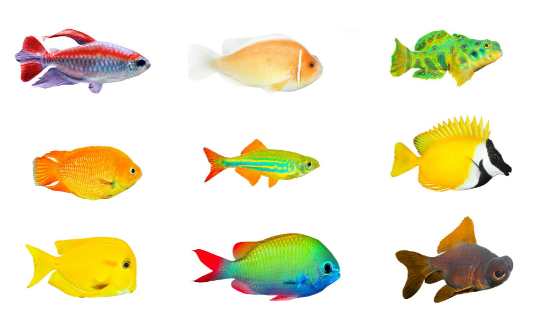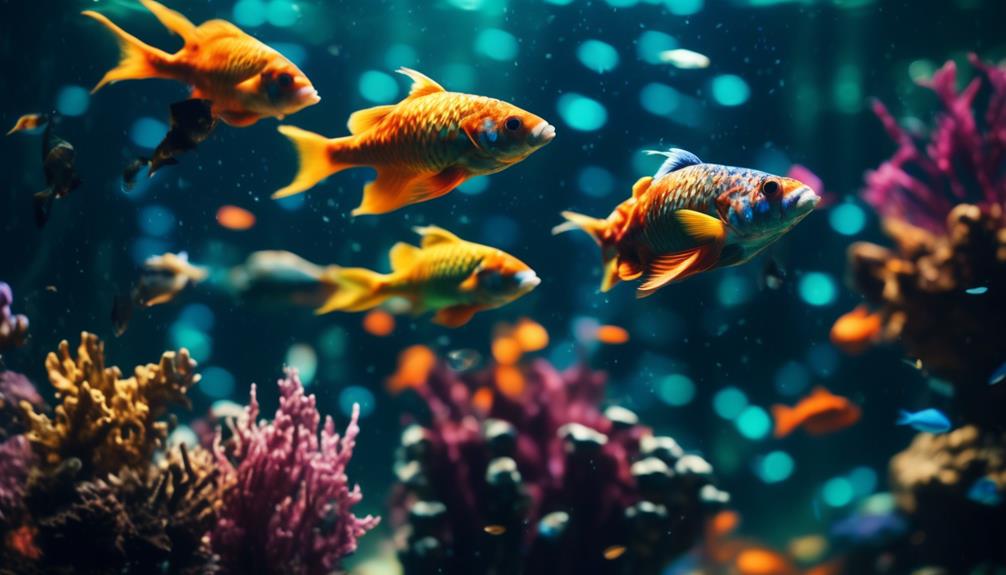
Imagine yourself standing on the shore of a vast ocean, gazing into its depths as the waves crash against the rocks. Suddenly, a flash of vibrant colors catches your eye, and you realize it’s a scat fish darting through the water with grace and agility. Just like this enigmatic creature, the world of scat fish holds many secrets waiting to be discovered.
From their origins in the estuaries of Australia and Southeast Asia to their unique physical characteristics and care requirements, there is so much to learn about these captivating creatures.
So, join us on this intriguing journey as we unlock the mysteries of the fascinating world of scat fish.
Key Takeaways
- Scat fish, also known as argus fish and spotted scats, are popular brackish water aquarium fish with unique square-shaped bodies and large spots.
- They originate from estuaries in Australia and Southeast Asia, particularly mangroves and other brackish water habitats.
- Scats require large aquariums, adequate filtration, and regular water changes due to their active nature and high waste production.
- As omnivores, they can eat a variety of foods, but caution should be taken as some aquarium plants, like Java Fern, are toxic to them. Additionally, they are sensitive to nitrite levels in the water, so proper filtration and water maintenance are crucial.
General Description and Origins
Scat, also known as argus fish and spotted scats, is a popular species of brackish water aquarium fish that originates from estuaries in Australia and Southeast Asia. These fish have square-shaped and compressed bodies, with silver-green or silver-brown colors and large black or brownish-red spots. They’re native to mangroves and other estuaries, thriving in aquariums with plenty of plants and hiding spaces.
Scat fish are peaceful and thrive when kept in large schools of 6 or more fish. They can grow up to 10 inches in length, requiring large aquariums with ample swimming space. It’s important to note that scats produce a significant amount of waste and are sensitive to nitrite levels, so proper maintenance, including adequate filtration and regular water changes, is necessary for their care.
Physical Characteristics of Scat

With their square-shaped and compressed bodies, the physical characteristics of scat fish are distinctive and unique. These fish have a distinct dorsal fin composed of hard rays, which are mildly poisonous. The body color of scat is silver-green or silver-brown, adorned with large black or brownish-red spots. They have a slender body shape and a slightly curved head.
Scat fish have a small, pointed mouth and eyes positioned high on their heads. They also possess a set of long, slender pectoral fins and a forked tail. These physical attributes allow scat fish to maneuver swiftly through the water and camouflage themselves in their natural habitats.
Habitat and Tank Requirements
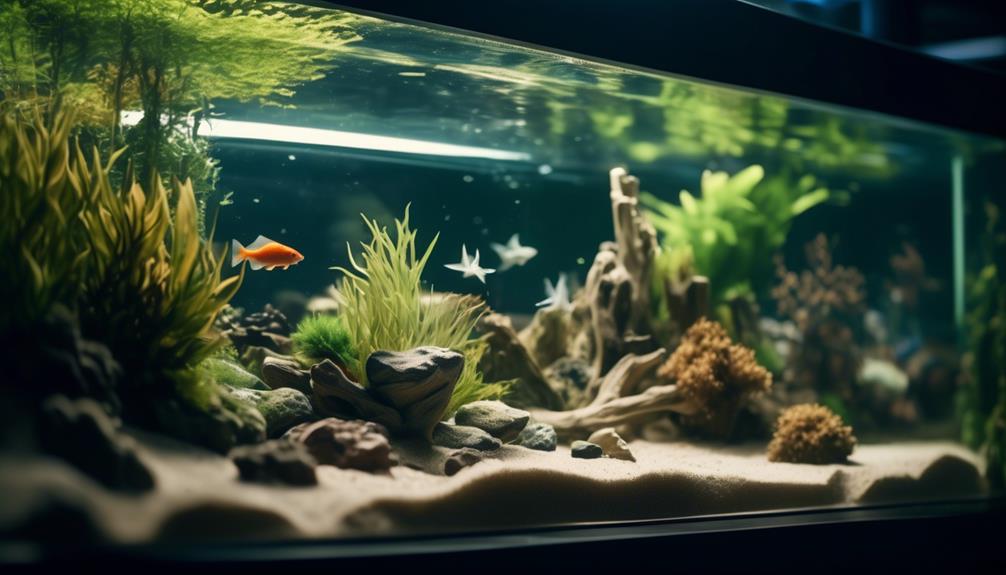
To provide optimal living conditions for scat fish, it is important to create a suitable habitat in the aquarium and meet their specific tank requirements. Scats are brackish water fish that thrive in large aquariums with plenty of open swimming spaces. They need a tank size of at least 75 gallons to accommodate their active nature and potential growth up to 10 inches in length. Adequate filtration is crucial to maintain water quality as scats produce a significant amount of waste. Additionally, regular water changes are necessary to prevent nitrite build-up, which they are highly sensitive to. To summarize their tank requirements, refer to the table below:
| Tank Requirement | Description |
|---|---|
| Tank Size | At least 75 gallons |
| Filtration | Adequate filtration system |
| Water Changes | Regular water changes to control nitrite levels |
| Open Swimming Space | Provide large open spaces for swimming |
| Brackish Water | Maintain a salinity level of 1.005-1.010 |
Maintenance and Care Tips
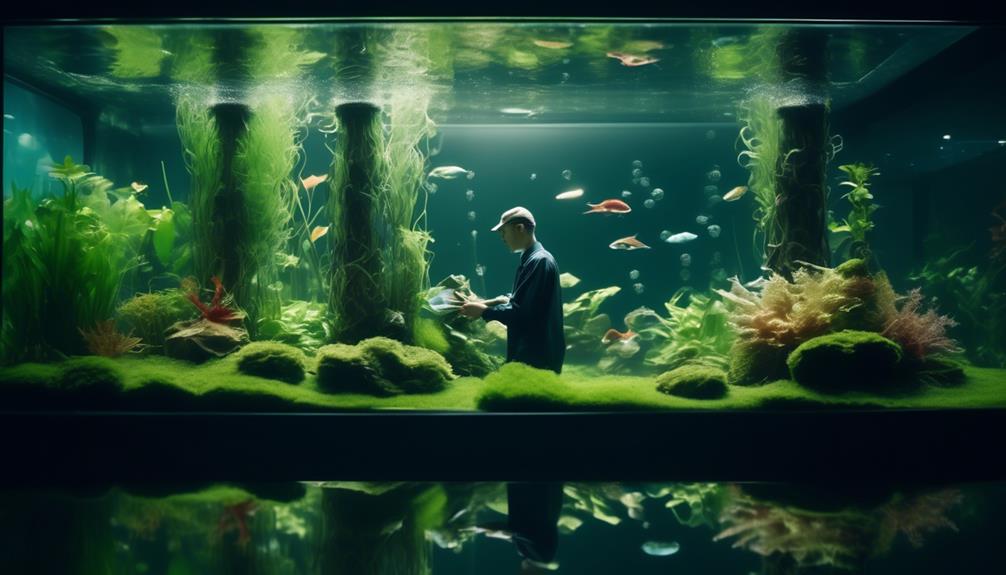
Creating a suitable habitat and meeting the specific tank requirements for scat fish is essential for their maintenance and care. To ensure the well-being of your scat fish, here are some important tips to follow:
- Provide a large aquarium: Scat fish can grow up to 10 inches in length and require plenty of swimming space.
- Install adequate filtration: Scats produce a significant amount of waste, so proper filtration is necessary to maintain water quality.
- Perform regular water changes: Scats are sensitive to nitrite levels, so weekly water changes are crucial to keep their environment clean.
- Offer a varied diet: Scat fish are omnivores and enjoy a diverse diet. Feed them flakes, algae, brine shrimp, lettuce, and dried seaweed to meet their nutritional needs.
Feeding Habits and Nutrition
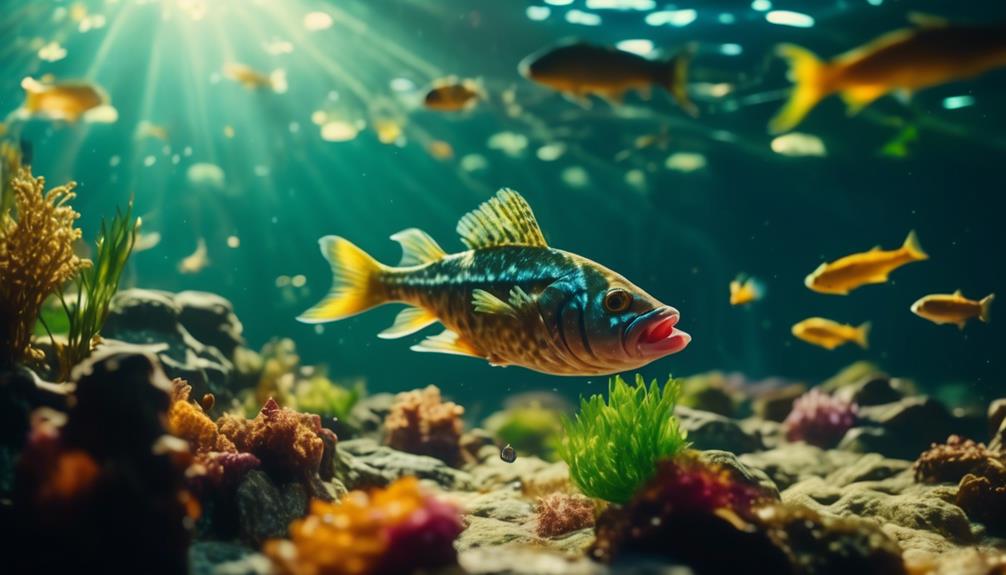
Feeding habits and nutrition are crucial aspects of caring for scat fish in your aquarium. Scat fish are omnivores and readily accept various types of food. They can eat flakes, algae, brine shrimp, lettuce, and dried seaweed.
However, it’s important to note that scats are gregarious eaters and produce a significant amount of waste. Therefore, adequate filtration and regular water changes are necessary to maintain their feeding habits. These fish are highly sensitive to nitrite levels in the water, so proper filtration is essential to keep them healthy.
Water Quality and Filtration
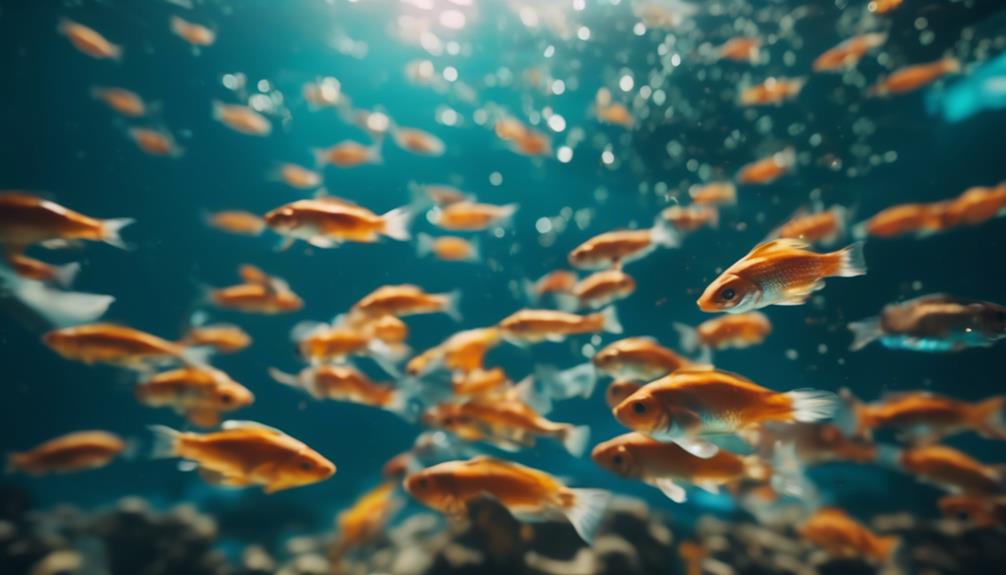
Maintaining proper water quality and filtration is essential for the health and well-being of your scat fish in the aquarium. Here are some key points to consider:
- Regular water changes: Adequate filtration and weekly water changes are necessary to remove waste and maintain optimal water conditions for your scat fish.
- Nitrite levels: Scats are sensitive to nitrites, so it’s important to monitor and control nitrite levels in the water to prevent harm to your fish.
- Filtration system: Invest in a reliable filtration system that can effectively remove debris, toxins, and excess nutrients from the water, ensuring a clean and healthy environment for your scat fish.
- Water testing: Regularly test the water parameters, including pH, ammonia, nitrite, and nitrate levels, to ensure they’re within the appropriate range for your scat fish.
Compatibility With Other Fish
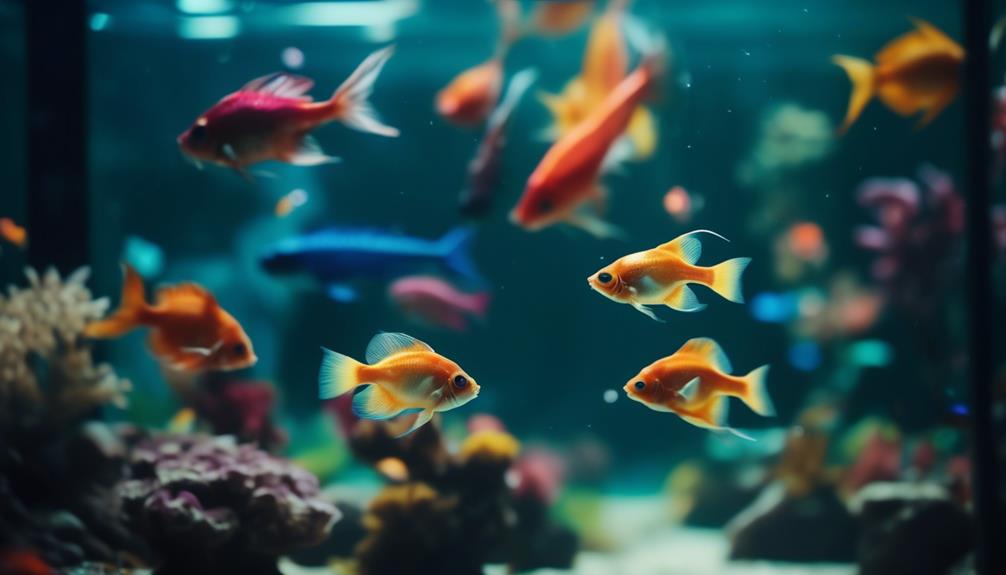
When considering the compatibility of your scat fish with other species in your aquarium, it is important to choose fish that share similar water requirements and temperament. Scat fish are peaceful and thrive when kept in large schools of 6 or more fish. They can grow up to 10 inches in length, so it is crucial to provide them with a large aquarium. Additionally, scat fish are highly active and enjoy large open swimming spaces. To help you make informed decisions about compatible tank mates, refer to the table below:
| Compatible Fish | Incompatible Fish |
|---|---|
| Guppies | Aggressive Cichlids |
| Mollies | Betta Fish |
| Swordtails | Tiger Barbs |
| Bristlenose Plecos | Goldfish |
Common Varieties of Scat
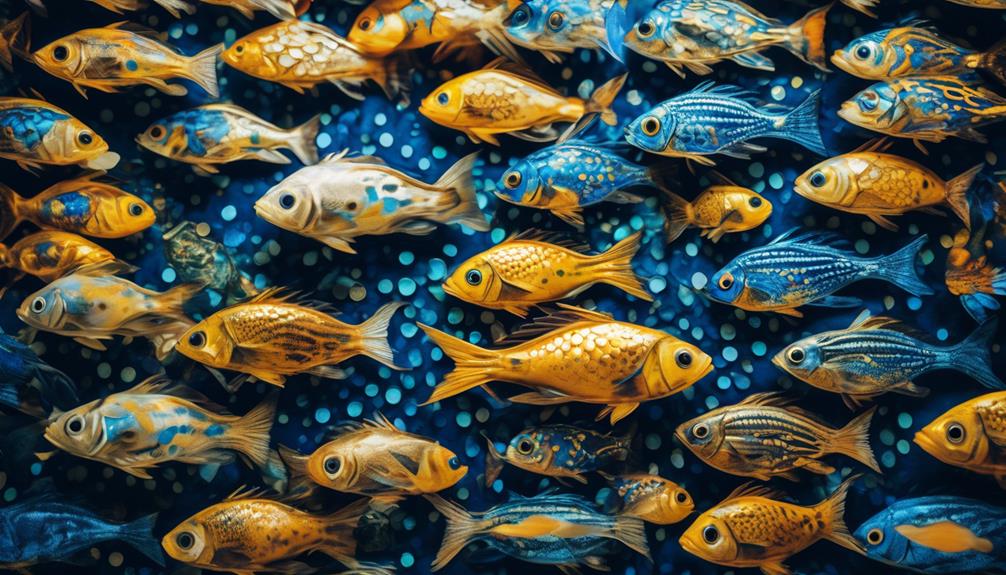
After considering the compatibility of scat fish with other species in your aquarium, it’s important to explore the common varieties of scat.
- Green scat: This variety has a silver-green body color with large black or brownish-red spots.
- Ruby scat: This variety has a silver-brown body color with large black or brownish-red spots.
Both green scat and ruby scat are peaceful and make excellent additions to brackish water community aquariums. However, it’s worth noting that older scats may prey on smaller tank mates and eat fecal matter of other fish. Therefore, it’s essential to carefully consider the size and behavior of the tank mates when adding scat fish to your aquarium.
Breeding Challenges and Limitations
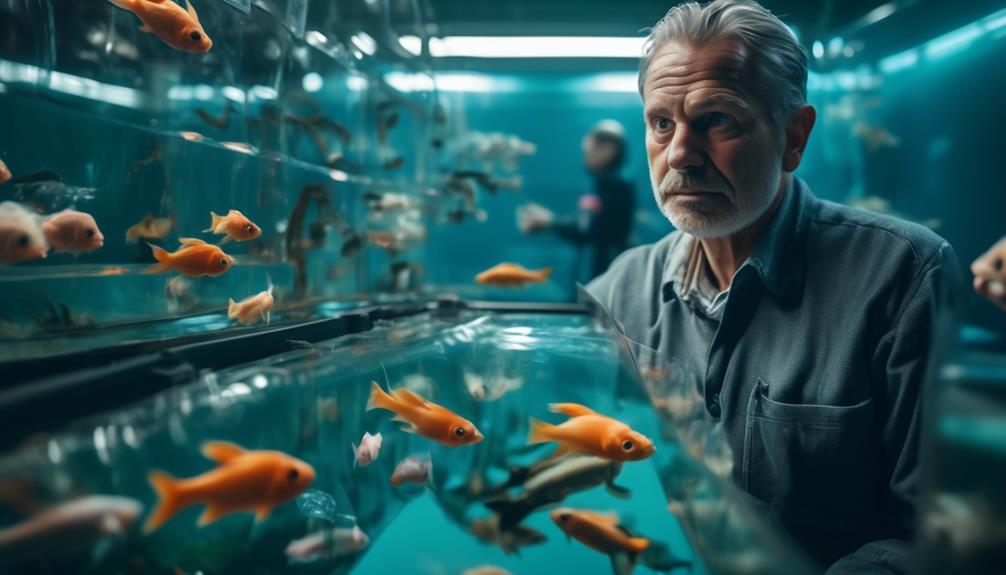
Breeding scat fish in captivity presents several challenges and limitations.
One major challenge is that scats aren’t known to breed in captivity. Despite efforts by fish breeders, successful reproduction hasn’t been achieved. This limits the availability of scat fish in the aquarium trade, as most specimens are wild-caught.
Another limitation is the lack of knowledge about their breeding behavior and requirements. Scats have complex reproductive behaviors in their natural habitat, such as courtship displays and nest building. Replicating these conditions in a captive environment is difficult.
Additionally, scats require specific water conditions, such as brackish water and specific salinity levels, which can be challenging to maintain consistently.
These challenges and limitations make breeding scat fish a task that requires further research and understanding.
Behavior and Socialization
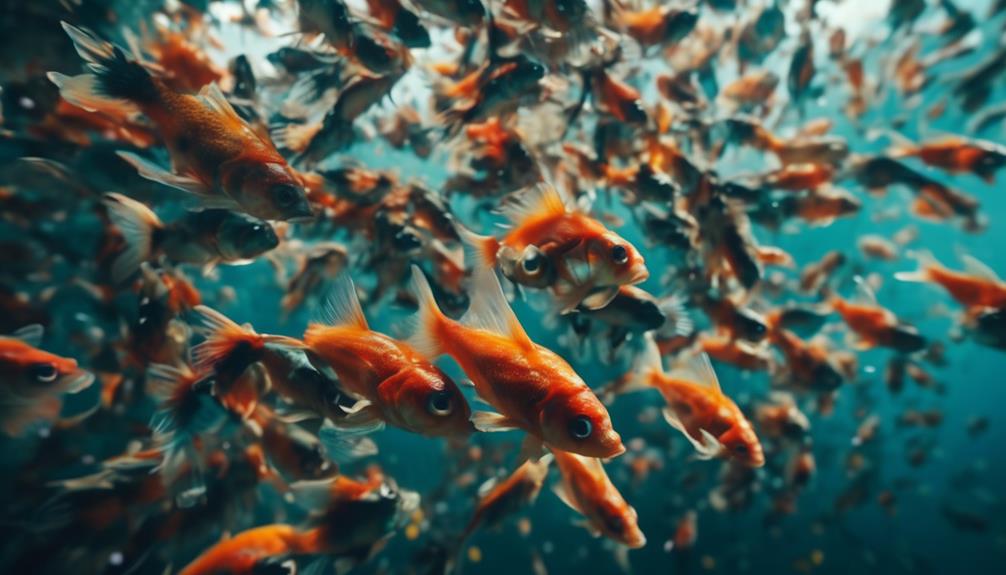
Scat fish exhibit interesting behavioral patterns and have a strong social structure within their brackish water community. Here are some key aspects of their behavior and socialization:
- Scat fish are highly gregarious and thrive when kept in large schools.
- They engage in cooperative feeding, often swarming together to consume food.
- Scats establish a pecking order within their group, with dominant individuals asserting their authority.
- They communicate through body language and various vocalizations, such as grunts and clicks.
These behaviors contribute to the overall harmony and dynamics of the scat fish community. By understanding their social structure and behaviors, aquarium enthusiasts can create optimal conditions for these fascinating fish to thrive.
Disease Prevention and Treatment

To ensure the health and well-being of your scat fish, it’s important to focus on disease prevention and treatment.
Regular observation is key in identifying any signs of illness, such as changes in behavior, appetite, or physical appearance.
Maintaining optimal water conditions is crucial to prevent diseases. Ensure that the water parameters are within the appropriate range and perform regular water testing.
Implement a regular cleaning routine to remove waste and debris.
Quarantine new fish before introducing them to the main tank to prevent the spread of diseases.
If your scat fish does become ill, prompt treatment is essential. Consult with a veterinarian or knowledgeable fish expert to determine the appropriate course of action, whether it be medication, water adjustments, or other treatments.
Tips for Creating a Scat-friendly Environment
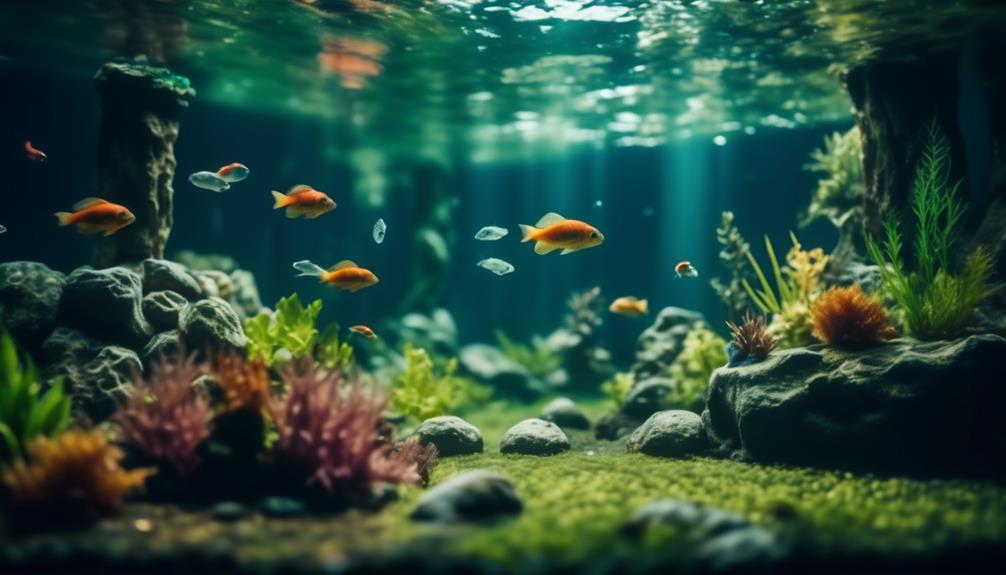
Creating a scat-friendly environment in your aquarium starts with providing ample space and suitable hiding spots for these active and social fish. Here are some tips to help you create the perfect environment for your scat fish:
- Provide plenty of open swimming space: Scat fish are highly active and enjoy having large open areas to swim around. Make sure your aquarium is spacious enough to accommodate their energetic nature.
- Include plants and decorations: Adding live plants and decorations to your aquarium won’t only make it visually appealing, but also provide hiding spots for your scat fish. They love to explore and seek shelter, so having plants and decorations will make them feel more secure.
- Maintain good water quality: Scat fish are sensitive to nitrite levels, so it’s crucial to have proper filtration and perform regular water changes. This will help keep the water clean and ensure the health and well-being of your scat fish.
- Consider a brackish water setup: Scat fish are native to brackish water estuaries, so replicating their natural environment in your aquarium can greatly benefit them. Adding salt to the water and maintaining the appropriate salinity level will create a more suitable habitat for your scat fish.
Interesting Facts About Scat Fish
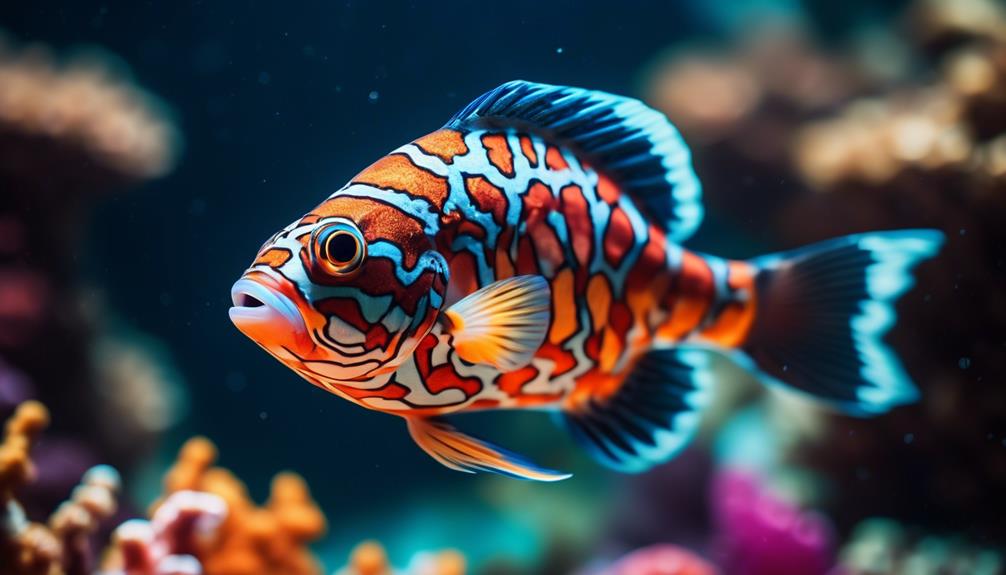
After setting up a scat-friendly environment in your aquarium, you may be curious to learn some interesting facts about these fascinating fish.
Did you know that scat fish have a unique way of communicating? They produce a series of clicking sounds by grinding their teeth together, which is quite remarkable.
Another interesting fact is that scat fish have the ability to change their coloration to blend in with their surroundings. This helps them camouflage and avoid predators.
Additionally, scat fish have a special adaptation called a labyrinth organ, which allows them to breathe air directly from the surface. This enables them to survive in low-oxygen environments.
These intriguing facts make scat fish a truly captivating species to have in your aquarium.
Enhancing the Aesthetics of Your Scat Aquarium
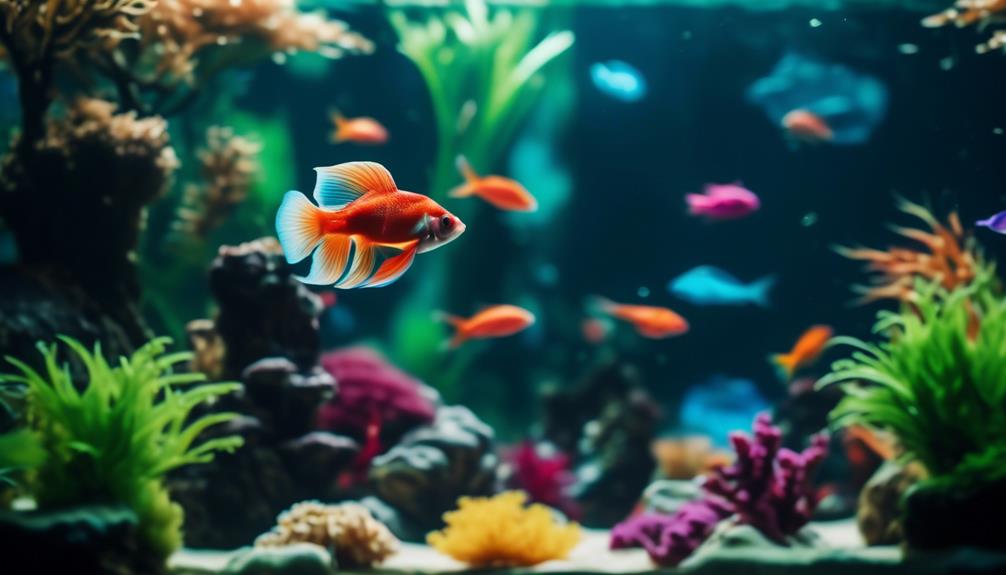
One way to enhance the aesthetics of your scat aquarium is by adding natural-looking decorations and aquatic plants. These additions not only create a visually pleasing environment for your scats but also provide them with a sense of security and enrichment.
Here are some tips to enhance the beauty of your scat aquarium:
- Choose natural-looking decorations such as driftwood, rocks, and caves to mimic their natural habitat.
- Select a variety of aquatic plants like Anubias, Java Moss, and Amazon Sword to create a lush and vibrant underwater landscape.
- Incorporate different textures and colors to add depth and visual interest to your aquarium.
- Consider using LED lighting to highlight the colors and patterns of your scat fish and create a mesmerizing effect.
Frequently Asked Questions (Faqs) About Scat Fish

If you’re curious about scat fish, you may have some frequently asked questions. Here are a few answers to common queries about these fascinating creatures.
First, scat fish, also known as argus fish or spotted scats, are popular brackish water aquarium fish. They’ve square-shaped and compressed bodies, with silver-green or silver-brown coloration and large black or brownish-red spots.
Scats originate from estuaries in Australia and Southeast Asia, specifically mangroves and other brackish water habitats. They thrive in aquariums with plenty of plants and hiding spaces, but be aware that they can eat most types of aquarium plants except for Java Fern, which is toxic to them.
Scats are peaceful and enjoy swimming in large schools, so they require a spacious aquarium to thrive. They’re omnivores and can eat a variety of foods, including flakes, algae, brine shrimp, lettuce, and dried seaweed. However, they produce a significant amount of waste and are sensitive to nitrite levels in the water. Therefore, adequate filtration and regular water changes are necessary for their care.
Lastly, scats aren’t known to breed in captivity, and there are two common varieties: green scat and ruby scat. Green scat and ruby scat are peaceful and make excellent additions to brackish water community aquariums, but older scats may prey on smaller tank mates and eat fecal matter of other fish.
Frequently Asked Questions
Can Scat Fish Live in Freshwater Aquariums?
No, scat fish cannot live in freshwater aquariums. They are brackish water fish that require a specific salinity level. It is important to provide them with the right environment to ensure their health and well-being.
Do Scat Fish Require a Specific Temperature Range in Their Tank?
Scat fish do require a specific temperature range in their tank. It is recommended to keep the water temperature between 75-82°F (24-28°C) for their optimal health and well-being.
Can Scat Fish Be Kept With Aggressive or Territorial Fish Species?
Yes, scat fish can be kept with aggressive or territorial fish species, but it’s important to monitor their interactions closely. Provide ample hiding spaces and ensure the tank is large enough to accommodate all the fish comfortably.
How Long Do Scat Fish Typically Live in Captivity?
In captivity, scat fish typically live for around 5 to 7 years. It’s important to provide them with proper care, including a large aquarium, adequate filtration, and regular water changes to ensure their well-being.
Are There Any Specific Diseases or Health Issues That Scat Fish Are Prone To?
Scat fish can be prone to specific diseases and health issues. It’s important to monitor their nitrite levels and provide adequate filtration and water changes to ensure their well-being.
What is the Relationship Between Betta Splendens and Scat Fish in the Aquarium Hobby?
Betta splendens, also known as Siamese fighting fish, can be compatible with scat fish in the aquarium hobby. Despite the fiery nature of betta splendens, scat fish are usually larger and more peaceful, making them potential tank mates. It’s important to monitor their interactions to ensure a harmonious cohabitation.
Conclusion
In conclusion, scat fish are truly fascinating creatures that add a unique touch to brackish water aquariums. With their striking coloration and square-shaped bodies, they’re sure to capture your attention.
It’s important to provide them with a large tank, proper filtration, and regular water changes to ensure their well-being. By understanding their feeding habits and creating a scat-friendly environment, you can create a beautiful and thriving aquarium.
So dive into the captivating world of scat fish and enjoy the wonders they bring.




